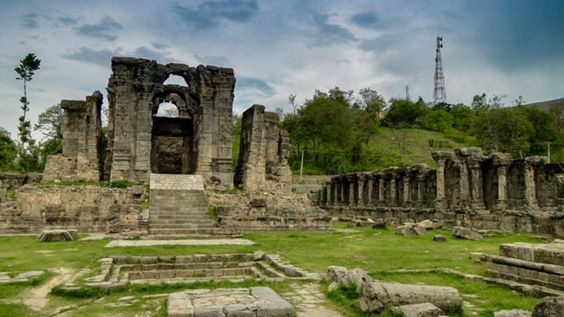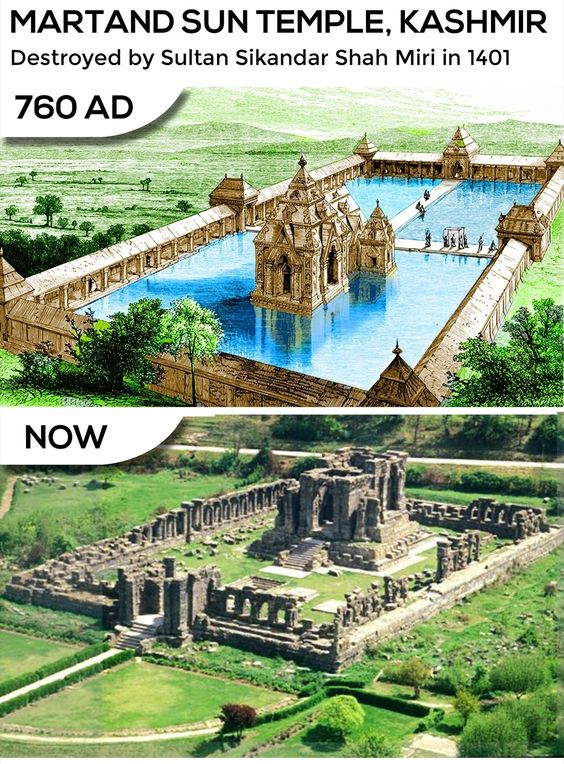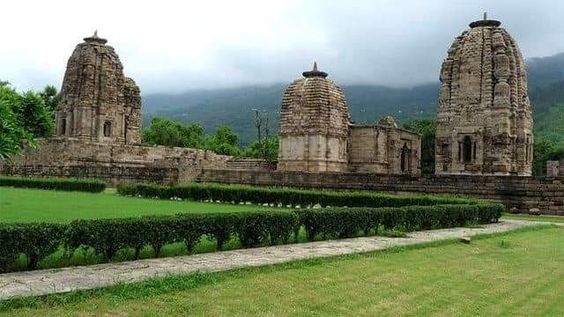Martand Sun Temple
The Martand Temple is located in the city of Anantnag in the valley of Kashmir in Jammu and Kashmir, India. It was built under the rule of King Lalitaditya and is among one of his best works.
It is dedicated to Surya , the sun god in Hinduism. In fact Martand is another name of Surya in Sanskrit. The temple was glorious and wonderful ,but it was destroyed under the rule of Islamic kings and at present only the ruins of the original temple are remaining.
Construction
King Lalitaditya Muktapida (724 CE- 760 CE) was a Kshatriya king of Sun dynasty (Suryavanshi).He was the founder of Karkota dynasty of Kashmir, which was one of the largest dynasty in the world. In the book Rajatarangini (11th CE) he is depicted as a world conqueror .
In the honour of the Sun God , Bhaskar the temple was built. The temple is an extraordinary presentation of Kashmiri art ,beauty, design and architecture. its is also very pretty and perfect, it is built in a square field , with the snow cap mountains behind it.
Lalitaditya was not just a founder of vast empire of Karkota ,but also the founder of art and skill of Kashmiri Hindus.

Architecture
Martand Temple is and example of extraordinary building skills of Kashmiri builders . It is built on the top of a plateau from which one can see the entire valley of Kashmir. It has mountains behind it, covered with snow in winters.
The temple has a stone boundary ,and is the biggest example of peristyle architecture in Kashmir. It is built with strong square shaped limestones in the form of pillars. The primary shrine in the middle of the courtyard is surrounded by 84 other shrines .The courtyard is 220 ft long and 142 ft broad. The main temple is believed to have a pyramidal top , with the entrance in the western side ,which of the same width as the temple.
There are carvings and inscriptions on the ruins of the temple depicting other Gods like Vishnu , and sacred rivers like Yamuna and Ganga. There is also an inbuilt water conservation system in the temple. The rainwater was collected in a Kund ,located infront of the main temple in the centre of the complex.

DESTRUCTION
Sultan Sikander Butshikan ,the sixth Sultan of Mir dynasty in the fifteenth century destroyed many temples along with the Martand temple. Some nearby temples like the Awanti Swami temple in Anantnag were also destroyed during the same period. The temple was so grand and strong that it took more than an year to demolish it.
At the entrance there are carvings of devtas , whose faces are destroyed. There are broken pillars and shrines all around the temple, that indicate the grand architecture that was ruined.
Current Situation
The temple even after facing multiple demolition has some of its remaining intact with the ground. When someone enter the temple , he can imagine the glorious architecture which it originally had.
The temple is declared as the heritage of national importance in India. But there is very less improvement in the condition of the location . Their is no guide in the temple. The visitors are at their own . The remaining of broken sculptures still lies on the ground.
The locals says that there was immense possibility that if the grandeur of the temple was restored by the government , it would be one of the most visited temples in India.
But this was not possible ,due to less successful efforts or due to lack of proper tourism marketing for the temple.

The architecture of the temple has its own importance in world history. The idol of the temple (Surya) faces west , which is considered to be the symbol of auspicious (Siddha) temples in Hinduism. It is very important for the government to ensure the restoration of such sites which are of not just religious importance but also stand as the symbol of grandeur of Indian kings and medieval history.